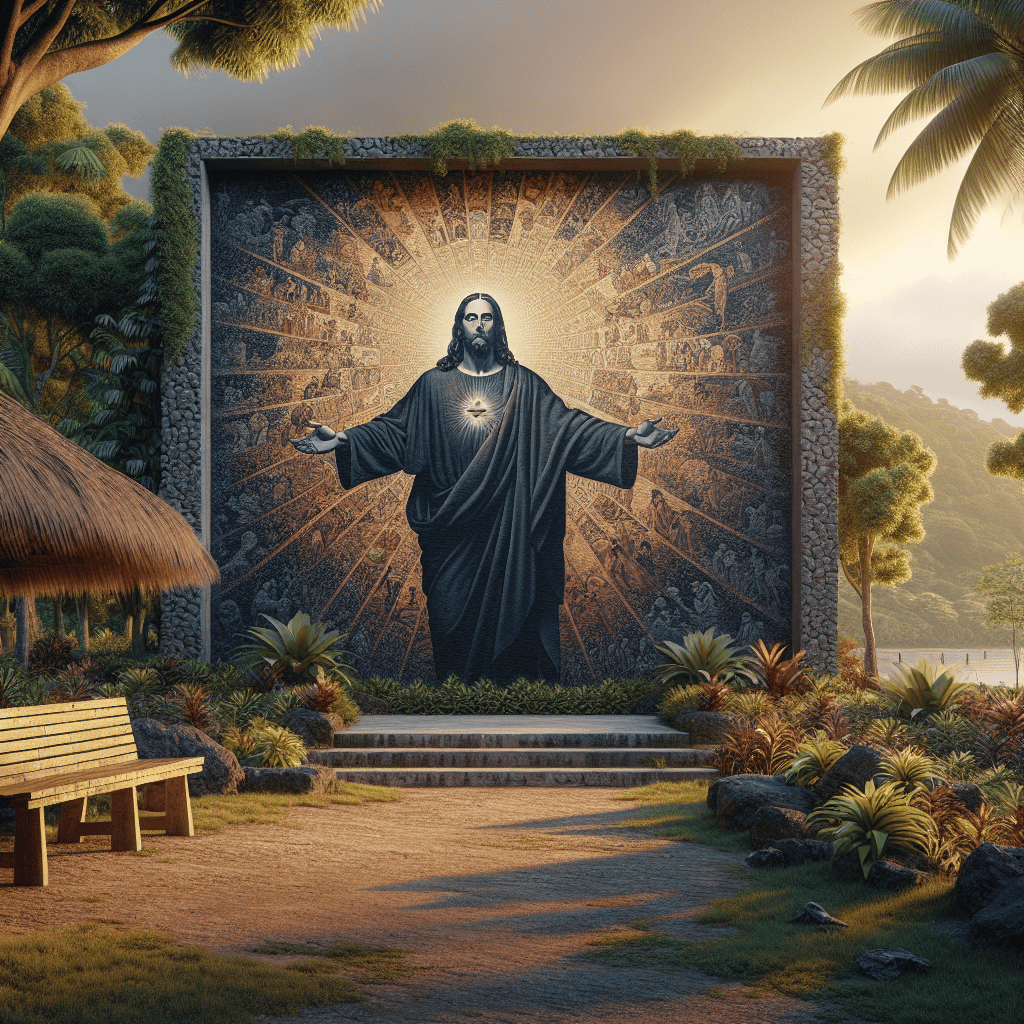The article revisits the intriguing story of the Church of the Black Christ in Ra, initially reported in The Fiji Times on March 10, 2019. The focus is on the remarkable mural titled “Black Christ and Worshippers,” painted by French-American artist Jean Charlot within the Church of the Black Christ (also known as St. Francis Xavier Church) in Navunibitu, Naiserelagi, Ra. This mural is renowned for being the westernmost fresco of the 20th century and the only monumental public artwork created by Charlot in the South Pacific.
Completed between 1962 and 1963, it represents one of the rare major artistic portrayals of Melanesians or Polynesians by an American artist during that century. The mural was commissioned by Father Franz Mathias Wasner, an Austrian priest who worked with the Trapp Family Singers, famous for their inspirational stories seen in “The Sound of Music.”
Despite its cultural significance, many locals were unaware of the mural’s existence. However, it has drawn tourists from all over, contributing to the community’s engagement with their heritage. The narrative around the mural is deeply connected to the historical context of Fiji, where Charlot’s work symbolized the meeting of different cultures and the essence of post-colonial identity.
Barbara Pirie, who knew the Charlots well, highlighted that Jean’s inspiration came not only from his artistic inclinations but also from the locals and Fiji’s unique environment, emphasizing the connection he formed with the community. The murals were created as a religious and cultural expression, pushing against colonial narratives by representing local identities and heritage.
Dr. Caroline Klarr, an academic who studied Charlot’s work, emphasized the significance of conserving the murals in Navunibitu as essential artifacts that articulate post-colonial values. She argued that Charlot’s Black Christ mural empowered Pacific Islanders by placing them in their cultural context and signifying their equality in the divine sense.
However, the murals are not without threats; Cyclone Winston in February 2016 severely damaged the church and endangered the integrity of the frescoes. Although they were painted on wet plaster—a durable medium—climate change poses ongoing risks to the artworks’ preservation.
The plea for conserving these murals comes not just from heritage enthusiasts but also from local historians like Barbara Pirie, who possess invaluable documents related to the frescoes. The importance of preserving this artistic endeavor is echoed by the Hawaii-based Jean Charlot Foundation, which advocates for the longevity of such crucial cultural pieces.
In terms of historical preservation, while the intersection of art and cultural identity is sometimes contentious, it also offers a hopeful narrative of resilience and adaptability, showing the power of artistic expressions to foster connections among people across different backgrounds.
This story encapsulates a larger message about the importance of cultural heritage, the actions needed for preservation, and the chance for future generations to appreciate a rich legacy beautifully painted on the walls of the Church of the Black Christ. It serves as a reminder that despite the threats posed by environmental factors, the value of cultural heritage can inspire and unite communities in efforts toward preservation.

Leave a comment